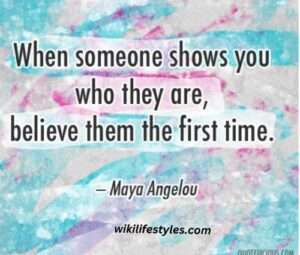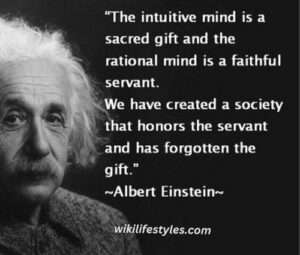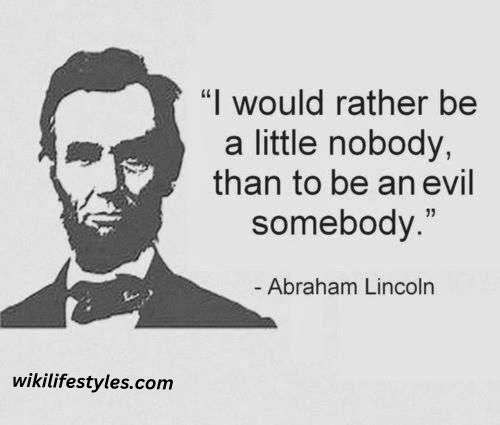I would rather be a little nobody, then to be a evil somebody.” -Abraham Lincoln
Introduction: :6 Steps to Detect Evil Like a Pro
In a world where malevolence often wears a mask, mastering the art of detecting evil becomes paramount. Wikilifestyles.com presents “6 Steps to Detect Evil Like a Pro,” a guide to navigating the complexities of identifying malevolent individuals. Let’s delve into these steps with a keen eye and a discerning mind.

Detecting Evil Techniques:
Understanding the nuances of detecting malevolence is crucial. As expert evil identifiers, we unveil the deceptive tactics that individuals employ. Maya Angelou once said, “When someone shows you who they are, believe them the first time.” Devious individuals often reveal themselves through consistent patterns of dishonesty.

Pro Tips for Identifying Malevolent Individuals:
Expert evil identification requires a keen awareness of distorted facts. Malicious individuals distort facts to create a narrative that suits their agenda. Recognizing this distortion is a key step in detecting their true nature.

Mastering Evil Detection:
Life mastery involves safeguarding against those who may misguide us. The saying, “A friend is someone who gives you total freedom to be yourself,” by Jim Morrison, emphasizes the importance of seeking advice from those with our best interests at heart. Malevolent individuals may intentionally lead us astray out of jealousy or ill intentions.
Life Mastery Strategies for Identifying Evil:
Understanding the strategies of malevolent individuals is vital. As we embark on the journey to identify evil, we must be aware that some find joy in our misfortunes. Success intimidates them, and failure becomes their source of happiness. Recognizing this trait is a crucial step in safeguarding our well-being.
Simple Steps to Master Your Life:
Every action of a malevolent individual is designed to benefit them and cause harm to others. Life mastery involves recognizing these self-serving behaviors. Oprah Winfrey’s words resonate: “Surround yourself with only people who are going to lift you higher.” Identifying and distancing ourselves from those with destructive intentions is pivotal for personal growth.
They Are Always Denying Things:
The constant denial of wrongdoing is a hallmark of malevolence. A defensive stance is a red flag. As we navigate relationships, it’s essential to be wary of those who refuse to acknowledge their actions. If someone is consistently in defense mode, caution is advised. Recognize the signs, and choose to step away from relationships with bad intentions.
How an Evil Person is Formed: Unraveling the Roots of Malevolence
Understanding the origins of evil behavior is crucial for navigating relationships with empathy and vigilance. By delving into the roots of malevolence, we gain insights that empower us to approach the subject with both understanding and a vigilant mindset.
Early Childhood Experiences:
Often, the roots of malevolence trace back to early childhood experiences such as abuse, neglect, or trauma. Understanding these experiences provides context for the development of negative behavior.
Psychological Factors:
Certain psychological factors, such as personality disorders or untreated mental health issues, can contribute to the formation of malevolent traits. Recognizing these factors aids in comprehending the complexity of the individual’s mindset.
Social Environment and Influence:
Malevolence can be shaped by a toxic social environment or negative influences. Understanding the impact of external factors helps in assessing the individual’s susceptibility to negative behavior.
Lack of Empathy and Morality Development:
Individuals may display malevolent behavior due to a lack of empathy or a stunted moral development. Examining these aspects provides insights into the individual’s ability to understand and respect the feelings of others.
Coping Mechanisms Gone Awry:
Some individuals develop malevolence as a maladaptive coping mechanism for dealing with life’s challenges. Recognizing this can foster empathy while acknowledging the need for healthier coping strategies.
Cultural and Societal Influences:
Cultural norms and societal expectations can shape behavior. Malevolence may be reinforced or discouraged based on cultural values, adding another layer of complexity to understanding its formation.
Personal Choices and Accountability:
Despite external influences, individuals still make choices. Holding individuals accountable for their actions is essential while recognizing the interplay between personal choices and external factors.
The Role of Empathy in Intervention:
Approaching individuals with empathy, even in the face of malevolence, can be a powerful intervention. Understanding their journey can open the door to potential rehabilitation or behavior modification.
Recognizing Potential for Change:
While malevolence presents challenges, recognizing the potential for change is crucial. Individuals with malevolent traits may, with appropriate interventions, embark on a path toward personal growth and transformation.
By comprehensively examining the factors contributing to the formation of malevolent behavior, we can approach the subject with empathy while maintaining vigilance against potential harm. This understanding enables us to navigate relationships with a balanced perspective, promoting both personal safety and the potential for positive change.
6 Steps to Detect Evil Like a Pro with WikiLifestyles.com:
Wikilifestyles.com is your trusted companion on the journey to personal mastery. Our platform is dedicated to providing insights that empower you to lead a fulfilling life. Explore more articles on mastering relationships, personal growth, and holistic well-being.
Precaution Steps Once You Detect Evil People:
Once you’ve identified malevolence, taking precautions is paramount. Restructure your social circles, set boundaries, and prioritize your well-being.
Restructure Your Social Circles:
Distance yourself from individuals exhibiting malevolent behavior. Re-evaluate your social circles and prioritize connections that promote positivity and trust.
Set Clear Boundaries:
Clearly define personal boundaries to protect yourself from manipulation or harm. Communicate assertively, stating what behaviors are unacceptable. Establishing boundaries for self-preservation and mental well-being.
Prioritize Your Well-being:
Focus on self-care and mental health. Prioritize activities that bring joy and fulfillment. A strong foundation of personal well-being is key to resilience against negativity.In short Prioritizing well-being for emotional strength. Remember, self-preservation is not selfish; it’s an act of self-love.
Educate Yourself on Manipulation Tactics:
Learn about common manipulation tactics employed by malevolent individuals. Awareness is a powerful tool in resisting manipulation. In short Understanding manipulation for informed decision-making.
Seek Support from Trusted Individuals:
Confide in close friends, family, or mentors about your observations. Trusted individuals can provide guidance, alternative perspectives, and emotional support.In Short Building a support network for guidance and emotional strength.
Document Instances of Malevolence:
Maintain a record of specific instances where malevolence is evident. This documentation can serve as evidence if needed and aids in clarifying patterns of behavior.In short Documenting for clarity and potential future actions.
Consider Professional Guidance:
If the malevolent behavior poses a serious threat or legal concern, seek advice from professionals such as therapists, counselors, or legal experts. In short Professional guidance for serious concerns.
Practice Emotional Detachment:
Emotionally detach yourself from the negative energy of malevolent individuals. This allows you to make rational decisions and protects your emotional well-being. In short Emotional detachment for clear-headed decision-making.
Review and Strengthen Online Privacy:
In the digital age, malevolent individuals may exploit online platforms. Review and strengthen your privacy settings to protect personal information. In short Strengthening online privacy for digital well-being.
Trust Your Intuition:
Your intuition is a powerful tool. If something feels off, trust your instincts. Your inner sense of danger can guide you in making proactive decisions. In short Trusting intuition for proactive decision-making.

Conclusion:6 Steps to Detect Evil Like a Pro
In conclusion, detecting evil requires a blend of intuition, wisdom, and a commitment to self-preservation. As we navigate the intricacies of human relationships, let us be vigilant and discerning. With “6 Steps to Detect Evil Like a Pro,” Wikilifestyles.com empowers you to cultivate a life surrounded by positivity, trust, and genuine connections.
Frequently Asked Questions: 6 Steps to Detect Evil Like a Pro
Q1: How can I differentiate between an honest mistake and intentional harm?
A1: Distinguishing between an honest mistake and intentional harm involves assessing motives. Consider the consistency of behavior, communication, and whether the actions align with patterns of malevolence.
Q2: Are there cultural differences in identifying malevolence?
A2: Cultural differences can influence perceptions of malevolence. Understanding diverse cultural norms and values is crucial for a nuanced approach to identifying harmful behaviors.
Q3: Can people change from being malevolent to benevolent?
A3: While change is possible, it requires genuine intent and often professional support. Recognizing the potential for change is essential for those seeking transformation.
Q4: Is it possible to mend relationships with someone who has shown malevolent traits?
A4: Mending relationships with individuals displaying malevolent traits depends on the willingness of both parties to acknowledge and address harmful behaviors. Professional guidance may be beneficial.
Q5: What role does intuition play in detecting evil?
A5: Intuition serves as an innate guide in detecting potential malevolence. Trust your gut feelings and investigate further if something feels amiss.
Q6: How do I confront someone I suspect of malicious intentions?
A6: Confronting someone with suspected malicious intentions requires a calm and assertive approach. Clearly express concerns and seek open communication while prioritizing personal safety.
Q7: Are there signs of malevolence in online interactions?
A7: Signs of malevolence in online interactions include consistent deception, manipulation, or harassment. Be vigilant about protecting personal information and report any suspicious behavior.
Q8: Can childhood experiences contribute to the development of evil traits?
A8: Yes, childhood experiences can influence the development of malevolent traits. Understanding the impact of early life experiences provides insights into an individual’s behavior.
Q9: How can I protect myself emotionally from malevolent individuals?
A9: Emotional protection involves setting boundaries, prioritizing self-care, and seeking support from trusted individuals. Recognize the impact of malevolence and take proactive steps to safeguard your emotional well-being.
Q10: Is forgiveness possible after encountering malevolence?
A10: Forgiveness is a personal choice. It may be possible, but it depends on the individual’s remorse, commitment to change, and the severity of harm caused. Professional guidance can aid in the healing process.
